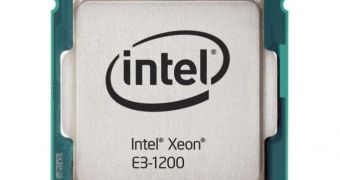In Intel's universe of server CPUs, things are starting to move quite fast. A few days ago, it acquired Altera for $16 billion, the famous Intel-affiliated FGBA designer, inheriting many of its architectures, and with this occasion Intel decided to launch its newest Xeon server CPU, which is based on Haswell's smaller brother, the Broadwell.
This launch comes in tandem with Intel's C-series Broadwell, the Core i5-5675C and the Core i7-5775C; as unimpressive as they might seem from a performance point of view, they do actually share the same core architecture with the Xeon series. This way, Intel will treat Computex as a more business-friendly event, keeping things limited to the server industry perspective instead of announcing big, high-performance GPUs.
As we mentioned in our previous article, Intel keeps major leaps ahead in CPU development for August-September time period, when the Intel Developer Forum conference will take place, and people are already anxiously waiting for the new Intel Skylake architecture to be revealed.
However, the current Xeon E3-1200 v4 seems to be somewhat of a niche product. Besides being a chip for workstations with moderate graphics power, Intel clearly positions the chip as a video transcoding and VDI platform. While traditionally the Xeon E3 was about either workstations or all kinds of low-end servers, the V4 comes with a stronger integrated graphics component, namely Iris Pro P6300 series, ranging from 1GHz to 1.15GHz of graphic processing power.
Unavoidable issues
Nonetheless, the new Xeon E doesn't come without faults. One of the biggest drawbacks of this new integrated GPU is that it's limited to only one video memory. Couple that with a powerful Open GL card, and you'll see the GPU struggle.
To keep things in perspective, the Xeon-D is a much more attractive server chip for most purposes: twice the amount of cores, twice the amount of L3-cache, with a 45W TDP power envelop remaining inside. In addition, Xeon-D does not need a separate chipset and supports up to 128 GB of DDR-4.
Overall, Xeon walks the line of the CPUs Intel previously launched at Computex. Modest and quite unattractive, they all are only breadcrumbs before the wonders that lie ahead this year.

 14 DAY TRIAL //
14 DAY TRIAL //